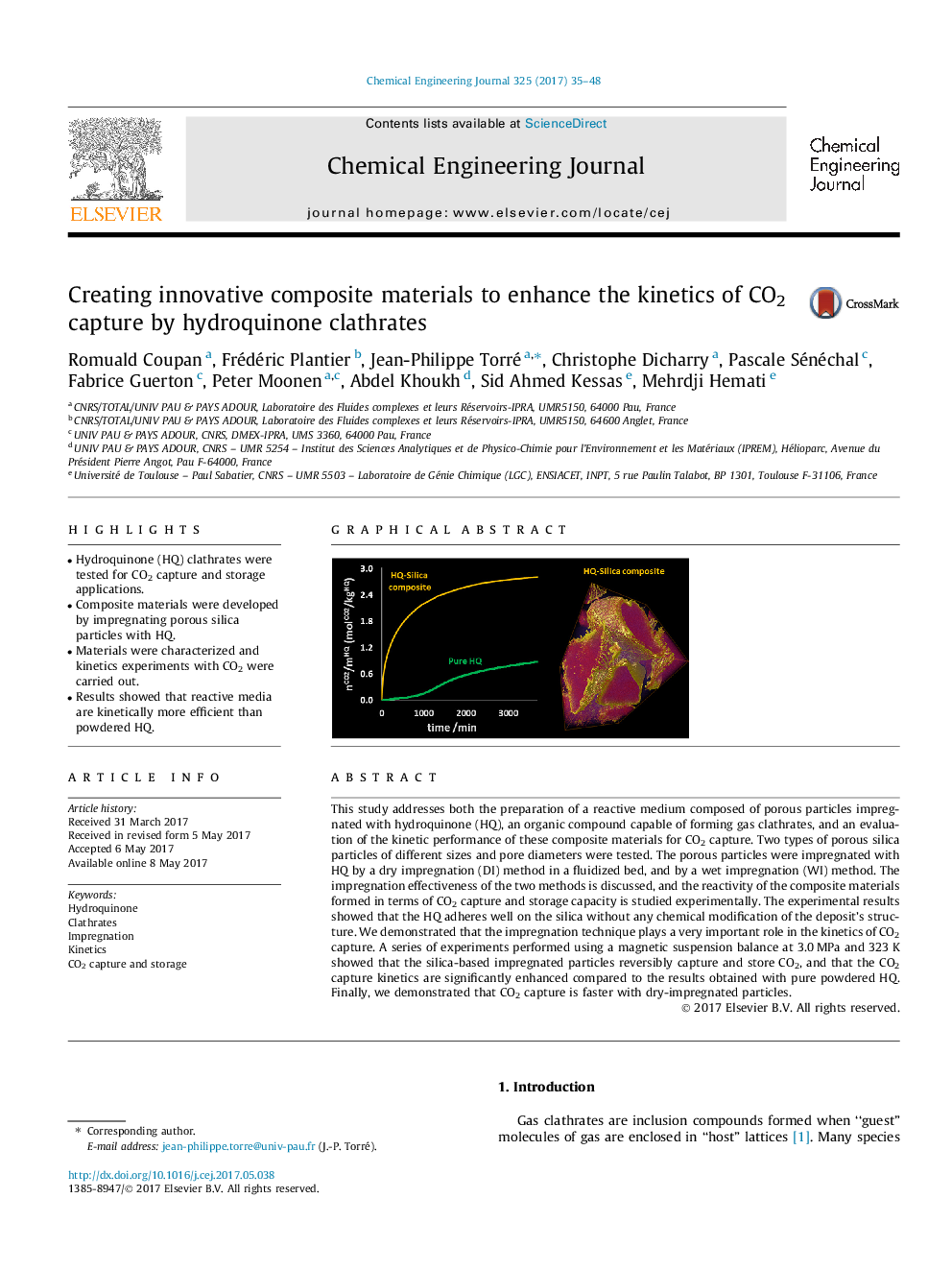| Article ID | Journal | Published Year | Pages | File Type |
|---|---|---|---|---|
| 6466194 | Chemical Engineering Journal | 2017 | 14 Pages |
â¢Hydroquinone (HQ) clathrates were tested for CO2 capture and storage applications.â¢Composite materials were developed by impregnating porous silica particles with HQ.â¢Materials were characterized and kinetics experiments with CO2 were carried out.â¢Results showed that reactive media are kinetically more efficient than powdered HQ.
This study addresses both the preparation of a reactive medium composed of porous particles impregnated with hydroquinone (HQ), an organic compound capable of forming gas clathrates, and an evaluation of the kinetic performance of these composite materials for CO2 capture. Two types of porous silica particles of different sizes and pore diameters were tested. The porous particles were impregnated with HQ by a dry impregnation (DI) method in a fluidized bed, and by a wet impregnation (WI) method. The impregnation effectiveness of the two methods is discussed, and the reactivity of the composite materials formed in terms of CO2 capture and storage capacity is studied experimentally. The experimental results showed that the HQ adheres well on the silica without any chemical modification of the deposit's structure. We demonstrated that the impregnation technique plays a very important role in the kinetics of CO2 capture. A series of experiments performed using a magnetic suspension balance at 3.0Â MPa and 323Â K showed that the silica-based impregnated particles reversibly capture and store CO2, and that the CO2 capture kinetics are significantly enhanced compared to the results obtained with pure powdered HQ. Finally, we demonstrated that CO2 capture is faster with dry-impregnated particles.
Graphical abstractDownload high-res image (89KB)Download full-size image
